 Politics
Politics  Politics
Politics  Weird Stuff
Weird Stuff Ten Bizarre Facts About The Doge Meme
 Our World
Our World 10 Ways Your Christmas Tree Is More Lit Than You Think
 Movies and TV
Movies and TV The 10 Coolest Stars to Set Sail on The Love Boat
 History
History 10 Things You Didn’t Know About the American National Anthem
 Technology
Technology Top 10 Everyday Tech Buzzwords That Hide a Darker Past
 Humans
Humans 10 Everyday Human Behaviors That Are Actually Survival Instincts
 Animals
Animals 10 Animals That Humiliated and Harmed Historical Leaders
 History
History 10 Most Influential Protests in Modern History
 Creepy
Creepy 10 More Representations of Death from Myth, Legend, and Folktale
 Politics
Politics 10 Political Scandals That Sent Crowds Into the Streets
 Weird Stuff
Weird Stuff Ten Bizarre Facts About The Doge Meme
 Our World
Our World 10 Ways Your Christmas Tree Is More Lit Than You Think
Who's Behind Listverse?

Jamie Frater
Head Editor
Jamie founded Listverse due to an insatiable desire to share fascinating, obscure, and bizarre facts. He has been a guest speaker on numerous national radio and television stations and is a five time published author.
More About Us Movies and TV
Movies and TV The 10 Coolest Stars to Set Sail on The Love Boat
 History
History 10 Things You Didn’t Know About the American National Anthem
 Technology
Technology Top 10 Everyday Tech Buzzwords That Hide a Darker Past
 Humans
Humans 10 Everyday Human Behaviors That Are Actually Survival Instincts
 Animals
Animals 10 Animals That Humiliated and Harmed Historical Leaders
 History
History 10 Most Influential Protests in Modern History
 Creepy
Creepy 10 More Representations of Death from Myth, Legend, and Folktale
10 Awesome Scientific Facts About Newborns
There are a lot of different ways we can describe babies. To some, they’re cute and cuddly; to others, they’re frustrating and exhausting. Differences in opinion aside, one way we don’t often hear babies described as is scientifically phenomenal.
While their little, tiny bodies might look like miniature versions of our own, they function in a completely different way as newborns than they do at a few months of age. This list is merely a scratch on the surface of the spectacular functions and occurrences in a newborn baby’s body.
10 They Grow Mustaches In The Womb
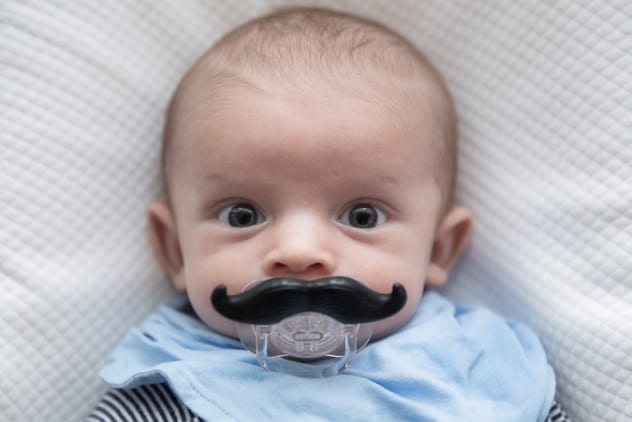
A study published in 1998 found that seven in 3,000 babies grew a “mustache” while in their mother’s womb. This was determined through ultrasound tests run between weeks 14 and 16 of gestation.[1] In this case, it wasn’t quite the “mustache” you’re thinking of, as the researchers used the term to refer to “rod-like structure on the fetal upper lip.” The seven fetuses with this structure were monitored, and in all cases, the structure had disappeared by birth, with no anomalies detectable in the newborns’ upper lips.
Fetuses, however, do grow hair in utero, and it often appears at 16 weeks. This hair, called lanugo, starts on the upper lip and spreads across the body. It usually disappears before birth but is sometimes still present when the baby is born.
9 Taste
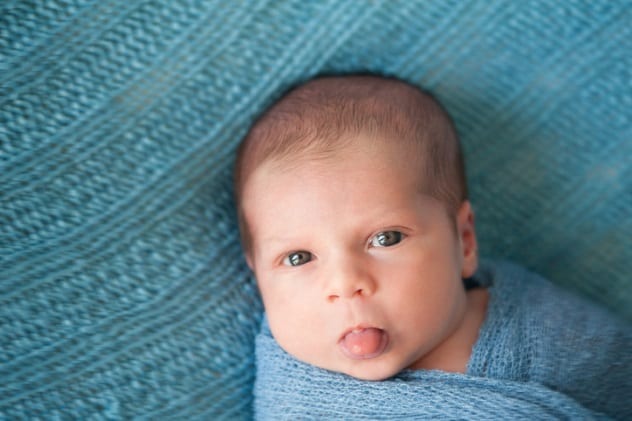
Babies’ taste buds form in the womb, and by the time they are born, they have plenty of them. Scientists have shown that what a mother eats during pregnancy has effects on a child’s food preferences in later life, as the fetus begins tasting different foods from absorption of the amniotic fluid in the womb.
It should be noted, however, that despite their prodigious number of taste buds, babies cannot detect salt until around five months old. This has been attributed to the fact that salt is not yet a dietary requirement for them, and it should therefore be limited in their diets. Over time, a baby’s taste buds change and decrease in sensitivity, which can result in different reactions to flavors that may have previously been loved.[2] With all this in mind, perhaps we might reconsider what we eat while pregnant if we want our children to grow up enjoying healthier foods.
8 Babies Are Born With Approximately 300 Bones
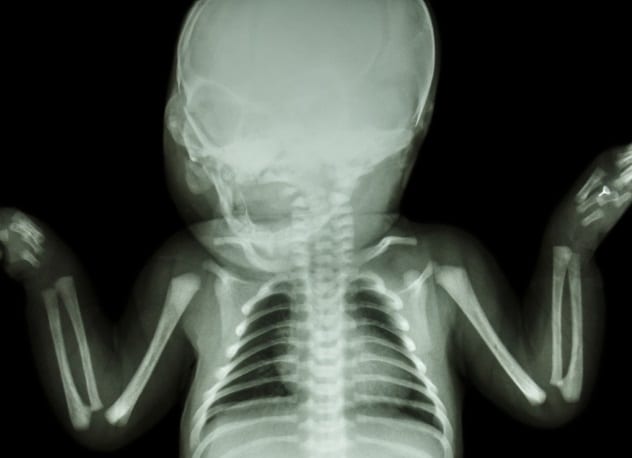
The number of bones in the average adult human body is 206. A baby, however, is born with about 300 bones, which, over time, fuse together to form the adult human skeleton as we know it. Also, a newborn’s skeleton is more cartilaginous than an adult’s. With the help of time and calcium, the bones ossify and strengthen until they form a solid skeleton.
Pretty cool, but why does this happen? A baby’s body is, by nature, designed to be soft and malleable. This is to help with delivery. Imagine if their bodies were as hard and rigid as an adult’s—birth would be nearly impossible! Therefore, babies’ bodies have softer skeletons until they enter the world, and these bones can begin to harden.[3] Just another incredible act of nature.
7 They Have No Kneecaps
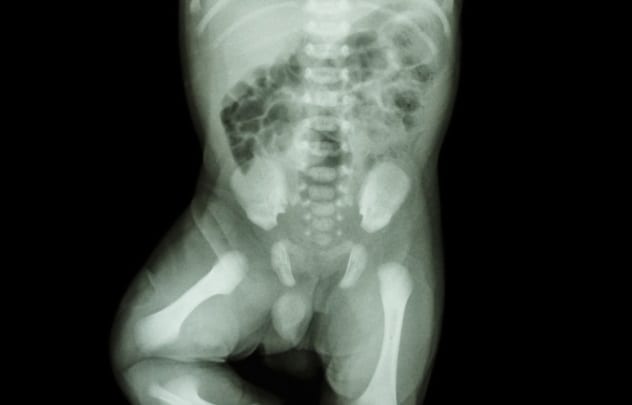
Despite having about 100 more bones than an adult, babies have no kneecaps! Well, that’s not entirely true. As previously discussed, the baby’s skeleton is more cartilaginous at birth. While the kneecap is, in fact, there, it is the softest kind of cartilage and is one of the last bones to become, well, bone. It should also be noted that because of this, the kneecaps won’t show up in X-rays, but they are technically there. The kneecaps will have finally fully ossified by three to five years of age.
Babies are blessed with this soft, pliable kneecap for the first years of their life, as they need them to crawl on. Ever wondered why it hurts to kneel or crawl now, but it didn’t when you were younger? This is exactly why. Part of the reason why this bone takes so long to form, however, is because we are on it so often as children, which slows down its forming process. It is also the biggest sesamoid bone in the body (meaning a bone which forms in the middle of a tendon). This is another contributing factor to its slow growth.[4] Think about this the next time you kneel down and say it hurts because you’re old. You would be 100-percent correct.
6 The Eye Color Of A Baby Can Change After Birth
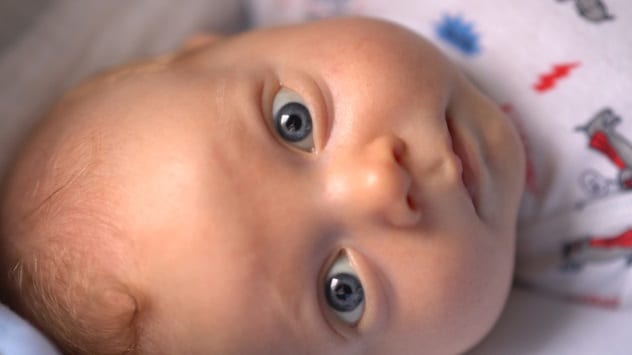
The color of our eyes is shaped by melanin, which is also responsible for the color of our skin and hair. Similar to how sunlight can darken our skin and lighten our hair, it has an effect on the eyes. Often, Caucasian newborns will have blue or grey eyes at birth. Once the baby opens its eyes, however, the light starts production of melanin within the iris. This process can lead to color change.[5]
The greatest eye color changes have been shown to occur between three and nine months of age, depending on the source you consult. After this, the changes will generally be more subtle if at all noticeable. Some people’s eyes still change well into adulthood, and no, I’m not talking about contact lenses.
5 They Can Swallow And Breathe Simultaneously

Studies have proven that babies can suck, swallow, and breathe all at the same time to assist them with breastfeeding. The amount of nutrients and oxygen a baby can take in while feeding is directly dependent on their ability to perform all these tasks at once, which is a skill they slowly lose as they grow older. It is, however, inaccurate to say that the tasks occur at the same exact millisecond in time. Instead, it is an intricate action called the suck-swallow-breathe process. This requires infants to perfectly time the movement of its jaw, hyoid bone, tongue, palate, pharynx, and larynx to extract milk, swallow it, and maintain breathing.[6]
Babies who lack this ability (often premature babies or those with respiratory conditions) have significant difficulty feeding and often need to be bottle-fed. Sometimes, this pattern is merely learned with a bit of time and encouragement. One thing scientists have yet to figure out is how exactly the tongue works when extracting milk and clearing it from the airway before the infant takes each breath. Although there have been many studies and theories presented, there is no clear answer. How a baby feeds may well forever remain a mystery. What clever little tots!
4 Babies Can’t Smile Until They’re A Few Months Old
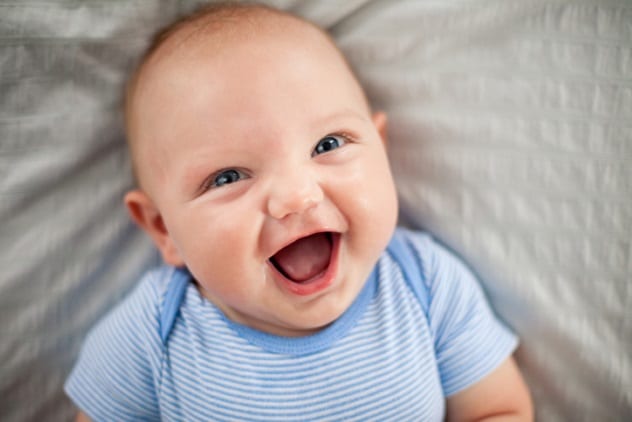
A baby’s first smile is one of the greatest milestones parents look forward to. It’s seen as a key indicator that you’re doing okay as a parent and that your little bundle of joy is as happy as you are. But their first smiles aren’t actually intentional or in response to a feeling of happiness. They are instead equivalent to those leg kicks and arm swings that babies do while discovering their range of movement.[7] This smile is called a reflex smile and usually disappears by the age of two months. The first real smile typically occurs between one and a half and three months of age.
Don’t be worried that you might mistakenly miss your baby’s first real smile, though. Reflex smiles are short and only occur when your baby is tired or even asleep. Their first real smile will be a clear response to something and will hold for longer. In other words, as parent, you will just know! Parents can encourage smiling through the obvious means of talking with their babies, cuddling them, and playing with them as often as possible. Studies show that this degree of affection can also cause faster development of the brain and greater social skills in later life.
3 Newborn Babies Don’t Produce Tears

No matter how loudly they scream and how much they carry on, newborn babies do not produce tears! This isn’t, however, just an act they’re putting on for their personal vendetta to keep you up at night. It’s merely because their tear ducts are still developing post-birth. The tear ducts will become functional between two weeks and two months of age.[8] This doesn’t mean that their eyes can’t produce any water in the meantime, merely that they can’t produce enough to actually shed tears.
Unfortunately, this delay in tear duct development can lead to late discovery of developmental problems in newborns, such as blocked tear ducts, which can lead to infection. It is important to look out for crusty or abnormally watery eyes on a baby to prevent prolonged opening of the tear ducts. Either way, it’s still crazy how they can cry so much without actually producing any tears!
2 They Have An Insane Amount Of Unique Reflexes
Reflexes are involuntary movements that occur as a normal bodily reaction, like when a doctor hits your knee and makes your leg kick out or when someone throws something at you, and you catch it without having to actually think about the movement. Some reflexes are only present in our bodies while we are very young, before we gradually grow out of them.
One common reflex seen in newborns is the Moro reflex. This is also sometimes called the startle reflex, as it occurs when a baby is surprised by a loud sound or sudden movement. Upon the startle, the baby will throw back its head and outstretch its arms and legs before pulling them back in.
Another unique bodily movement you may observe in a newborn is the tonic neck reflex, also known as the fencing position. As the baby turns its head to one side, the arm on that side will straighten, and the opposite arm will bend, hence the nickname “fencing position.” This can be present in a baby as late as seven months old.
Lastly, there’s the grasp reflex, which can be fun to play with for parents. If you stroke the palm of a baby’s hand, the hand will close and grasp, bringing about the name of the grasp reflex.
Alongside these few obvious reflexes, babies have about 70 others which are less observable.[9]
1 Newborns Know Your Taste In Music
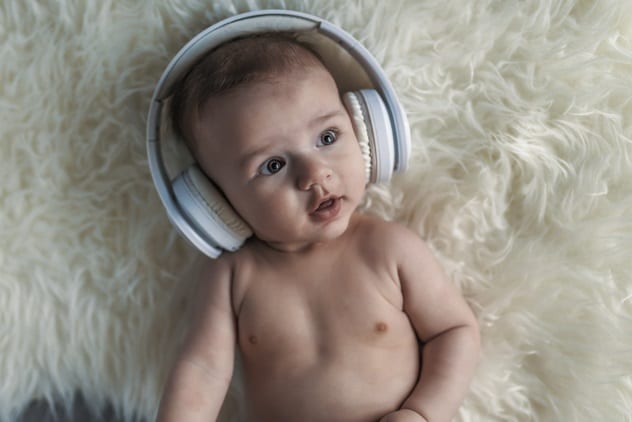
It has been scientifically proven that newborns remember things from inside the womb a lot longer than was once thought. Studies have shown that babies actually develop a preference for the music they heard while they were in the womb and still held this preference at a year old.[10] Even more astounding is that not only can they recognize the style of music which was played to them in the womb, but they can even remember specific songs!
Other studies have shown that babies can even display an aversion to specific types of music by kicking while hearing sounds they don’t like. What all of the studies have in common is that this ability of babies to recognize and react to certain music they’d heard in utero is based on the same mechanisms that enable them to become familiar with the sound of their parents’ voices. Perhaps we should be more careful when deciding what to rock out to in the car on the way to work while pregnant.
Read more surprising facts about babies on 10 Extremely Surprising Facts About Babies and 10 Things You Didn’t Know Babies Could Do.








